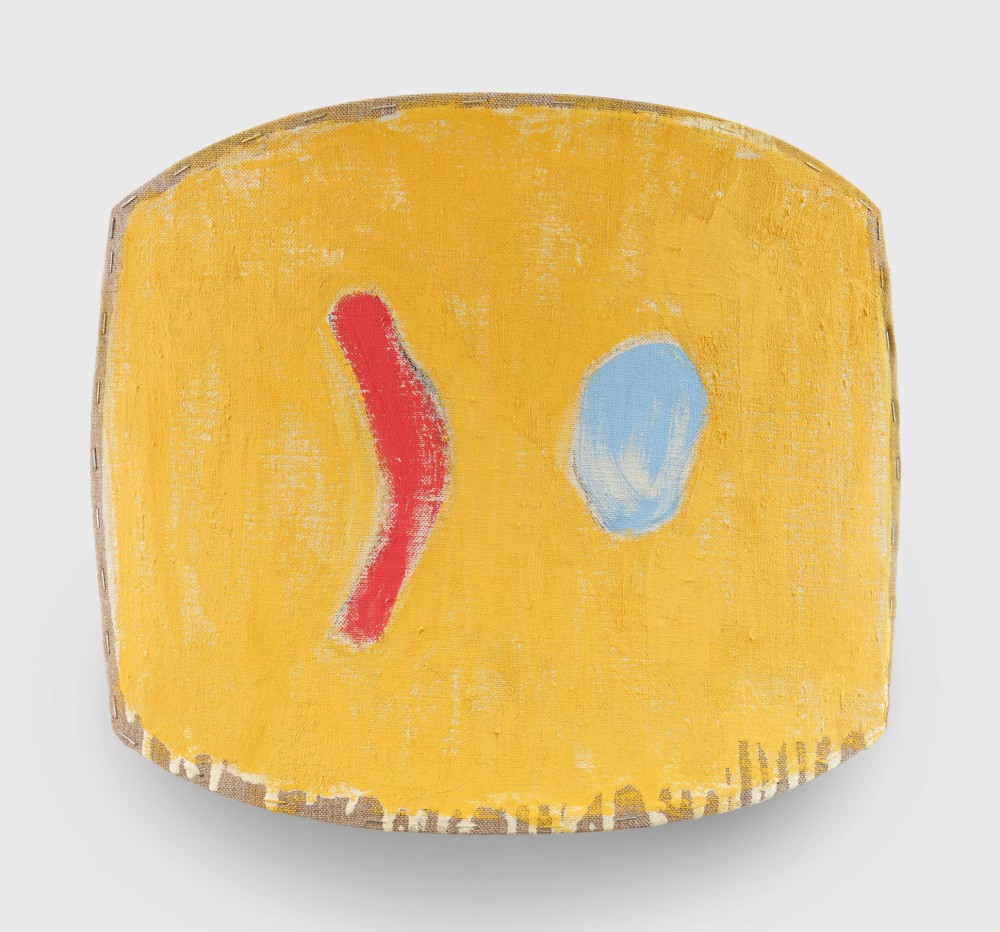
Ron Gorchov
David Kordansky Gallery is pleased to announce Ron Gorchov: Intervals, an exhibition of shaped canvas paintings by Ron Gorchov (b. 1930, d. 2020). This marks the first time the artist’s work has been the subject of a solo exhibition in Los Angeles. Produced during the last five years of the artist’s life, the works on view constitute a concise summation of his contribution to postwar and contemporary art, and his lasting influence on his peers and subsequent generations of painters and sculptors.
It was precisely by breaking with established norms defining the major lines of artistic exploration in North America and Europe after World War II that Gorchov clarified and expanded upon the underlying themes of those lines. Like other artists whose work is loosely grouped under the term “post-painterly abstraction,” he found new ways of extending the vocabularies of abstract expressionism and minimalist sculpture, showing that what separated them in terms of mood or visual energy was less important than the negotiations with materials, color, and form that also defined them.
However, Gorchov’s is a uniquely idiosyncratic and original body of work, one in which formal concerns are balanced against an insistent search to account for the innumerable perceptual and psychological perspectives its viewers might inhabit. For this reason, even as he pursued the terms of his own vision with remarkable focus, his work became imbued with immediacy and physicality that allow it to circumvent intellectual understandings of its notable art historical significance in favor of forging direct connections between eye, body, and mind. Stated pithily in a 2006 interview in The Brooklyn Rail, the artist’s belief that “everyone, if they don’t have impediments, can love painting” epitomizes the openness with which he pursued his investigations, even during the decades when his work was less frequently exhibited in the New York milieu he inhabited from the early 1950s onward.
Ron Gorchov: Intervals features eleven of the shaped canvas works for which Gorchov eventually became well known and includes examples from two series that he elaborated on continuously from the late 1960s and early 1970s, respectively, until the end of his career. Nine “shield” or “saddle” works, each of which consists of a single painted concave canvas panel, are accompanied by two vertically oriented arrays of stacked concave panels. In both cases, the shapes of the panels give them a distinctly architectural, even monumental, presence, even as their painted surfaces allow them to read as windows with views into illusionistic spaces. A similar tension animates the dialectic between flatness and dimensionality that is a constant throughout the artist’s production.
If the formats of these works are what first call the viewer’s attention, it is their modulated surfaces, colors, and compositional juxtapositions that reveal their qualities through extended looking. The single-panel shields are characterized by vertical pairs of irregular, kidney- or lozenge-shaped forms that hover over fields of luminous color. In each, Gorchov uses three colors, one for each of the forms and one for the background. The chosen hues often evoke primary and complementary color relationships, and, along with them, a sense of familiarity that the artist goes on to disrupt through subtle means rather than forced ones. The warmth of the golden yellow that dominates Silbo (2019), for example, is accentuated by the pale blue shape that floats right-center, while the bright red distorted shape that accompanies the latter subtly gives way, revealing the whitish, textured tooth of the linen support beneath the brushwork. The effect is stable and harmonious, but the details are dissonant and even rough-hewn. As a rule in these works, pigments do not flow all the way to the edges of the picture plane; drips, gaps between layers, and seemingly choreographed inconsistencies in the viscosity of the paint and the action of its application lend them a genial liveliness, as well as equal measures of approachability and austerity.
Algol (2016), one of the multi-paneled works on view, consists of six gently concave canvases, each of which appears to emerge from the one below it like a cresting wave. It exemplifies Gorchov’s penchant for creating paintings whose intimacy and forthright materiality bring them ever closer to their viewers, even as they retain enough mystery and inscrutability to qualify them as sublime. Though he hides nothing, reveling in the details of the work’s construction and the properties of the paint, he leaves room for the kinds of hidden pleasures that painterliness tends to conjure. A dark blue panel toward the center of the composition, for instance, seems to recede into something like perspectival distance, creating a depth of field that is both optical and emotional. Gorchov’s gift lies in having placed equal amounts of faith in what were, for many decades, competing aesthetic propositions. By making minimalist stacks that are also post-romantic color fields, or quasi-architectural interventions that are also picture-plane-oriented abstractions, he showed how tradition and theory are, at their best, the vehicles by which art becomes ever more contemporary, immediate, and alive.
Gorchov has been the subject of solo exhibitions at Hall Art Foundation, Reading, VT (2023); Contemporary Art Museum St. Louis, MO (2014); Centro Atlántico de Arte Moderno, Las Palmas de Gran Canaria, Spain (2011); MoMA PS1, New York, NY (2006 and 1979); and Berkeley Art Museum and Pacific Film Archive (BAMPFA), CA (1978). He participated in major institutional group exhibitions such as Artist’s Choice: Amy Sillman / The Shape of Shape, Museum of Modern Art, New York, NY (2019); 1975 and 1977 Whitney Biennials, Whitney Museum of American Art, New York, NY; and The 1970’s: New American Painting, New Museum, New York, NY (1979). His work is held in numerous public collections, including The Metropolitan Museum of Art, New York, NY; Museum of Modern Art, New York, NY; Whitney Museum of American Art, New York, NY; Solomon R. Guggenheim Museum, New York, NY; Art Institute of Chicago, IL; Detroit Institute of Arts, MI; and Philadelphia Museum of Art, PA.